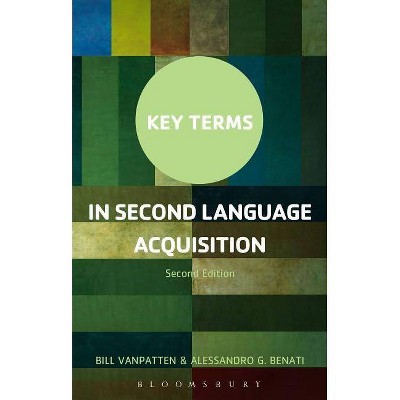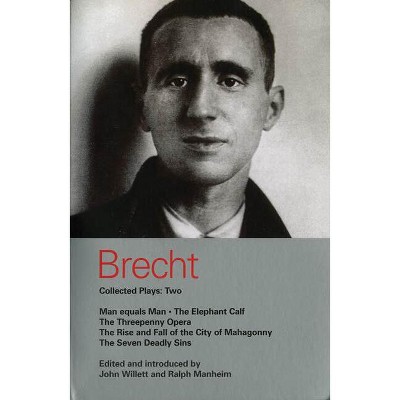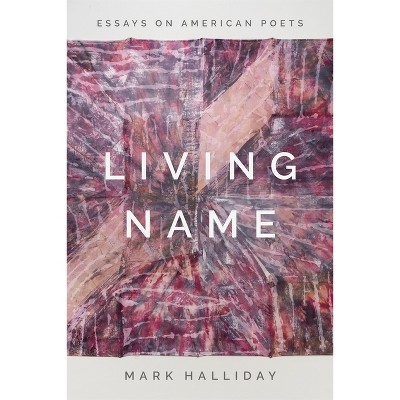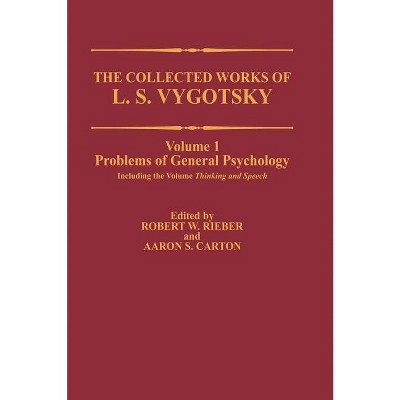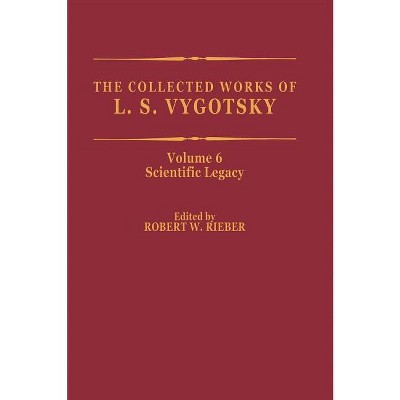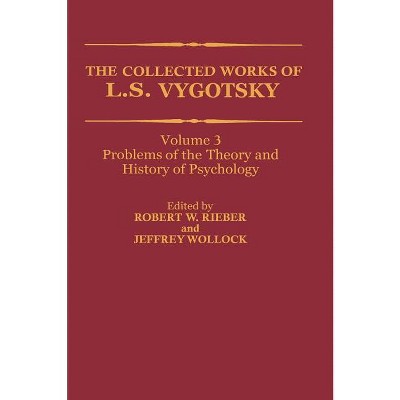Sponsored

The Language of Science - (Collected Works of M.A.K. Halliday) by Michael A K Halliday (Paperback)
In Stock
Sponsored
About this item
Highlights
- Halliday's investigations into grammatical metaphor take us deeply into the way we construct and expand meanings, starting with representations of concrete experienced events and ending with theoretical worlds populated by abstract entities linked through generalized relations and causalities.
- About the Author: Normal 0 false false false MicrosoftInternetExplorer4 !
- 268 Pages
- Language + Art + Disciplines, Language Arts
- Series Name: Collected Works of M.A.K. Halliday
Description
About the Book
For nearly half a century, Professor M A K Halliday has enriched the discipline of linguistics with his keen insights into the social semiotic phenomenon we call language. This ten-volume series presents the seminal works of Professor Halliday.Book Synopsis
Halliday's investigations into grammatical metaphor take us deeply into the way we construct and expand meanings, starting with representations of concrete experienced events and ending with theoretical worlds populated by abstract entities linked through generalized relations and causalities. He finds these processes most strikingly in the development of the modern sciences that have historically created robust virtual worlds of theory from observable material events. He sees the same processes of grammatical metaphor as children learn to participate in our built symbolic environment, particularly as they are introduced to these meaning systems in schools, an institution designed expressly for that purpose.' Professor Charles Bazerman, University of California, Santa Barbara.Review Quotes
'These four volumes (4, 5, 6 and 7) venture into remarkably diverse fields. How one man could master the minutiae of all these areas of linguistic research is a matter for wonder and admiration. As a linguistic polymath, Halliday far outstrips all contemporaries...One need look for no further explanation of Halliday's current stature as doyen of British linguistics.
The publication of Halliday's complete papers is an important contribution to scholarly documentation.' --Sanford Lakoff "Times Literary Supplement "
'Halliday's investigations into grammatical metaphor take us deeply into the way we construct and expand meanings, starting with representations of concrete experienced events and ending with a theoretical worlds populated by abstract entities linked through generalized relations and causalities. He finds these processes most strikingly in the development of the modern sciences that have historically created robust virtual worlds of theory from the observable material events of the world. But he sees these same processes in all the meaning systems of modern life, whether law, bureaucracy, economics, or arts. He sees the same processes of grammatical metaphor as children learn to participate in our built symbolic environment, particularly as they are introduced to these meaning systems in schools, an institution designed expressly for that purpose. The linguistic mechanisms Halliday identifies are congruent with Vygotsky's studies of how words come to direct our minds and perception, as individuals and societies. He shares with Vygotsky an understanding of how schooled or scientific concepts re-form the spontaneous concepts of everyday activity to sublate prior experience into higher degrees of abstraction. Both provide related accounts of how cultural history becomes embedded in the complex languages used in scientific, disciplined, or other cultural settings, so that we learn to think with the tools culture provides us, using our own aptitude for metaphorical thinking.' Professor Charles Bazerman, University of California, Santa Barbara.
About the Author
Normal 0 false false false MicrosoftInternetExplorer4 ! /* Style Definitions */ p.MsoNormal, li.MsoNormal, div.MsoNormal {mso-style-parent: ""; margin:0cm; margin-bottom: .0001pt; mso-pagination: widow-orphan; font-size:12.0pt; font-family: "Times New Roman"; mso-fareast-font-family: "Times New Roman"; mso-fareast-language: EN-US;} @page Section1 {size:612.0pt 792.0pt; margin:72.0pt 90.0pt 72.0pt 90.0pt; mso-header-margin:36.0pt; mso-footer-margin:36.0pt; mso-paper-source:0;} div.Section1 {page: Section1;} > /* Style Definitions */ table.MsoNormalTable {mso-style-name: "Table Normal"; mso-tstyle-rowband-size:0; mso-tstyle-colband-size:0; mso-style-noshow: yes; mso-style-parent: ""; mso-padding-alt:0cm 5.4pt 0cm 5.4pt; mso-para-margin:0cm; mso-para-margin-bottom: .0001pt; mso-pagination: widow-orphan; font-size:10.0pt; font-family: "Times New Roman"; mso-ansi-language: #0400; mso-fareast-language: #0400; mso-bidi-language: #0400;} M. A. K. Halliday, Emeritus Professor of Linguistics at the University of Sydney, Australis. Professor Jonathan J. Webster is Head of the Department of Chinese, Translation and Linguistics at the City University of Hong Kong.






